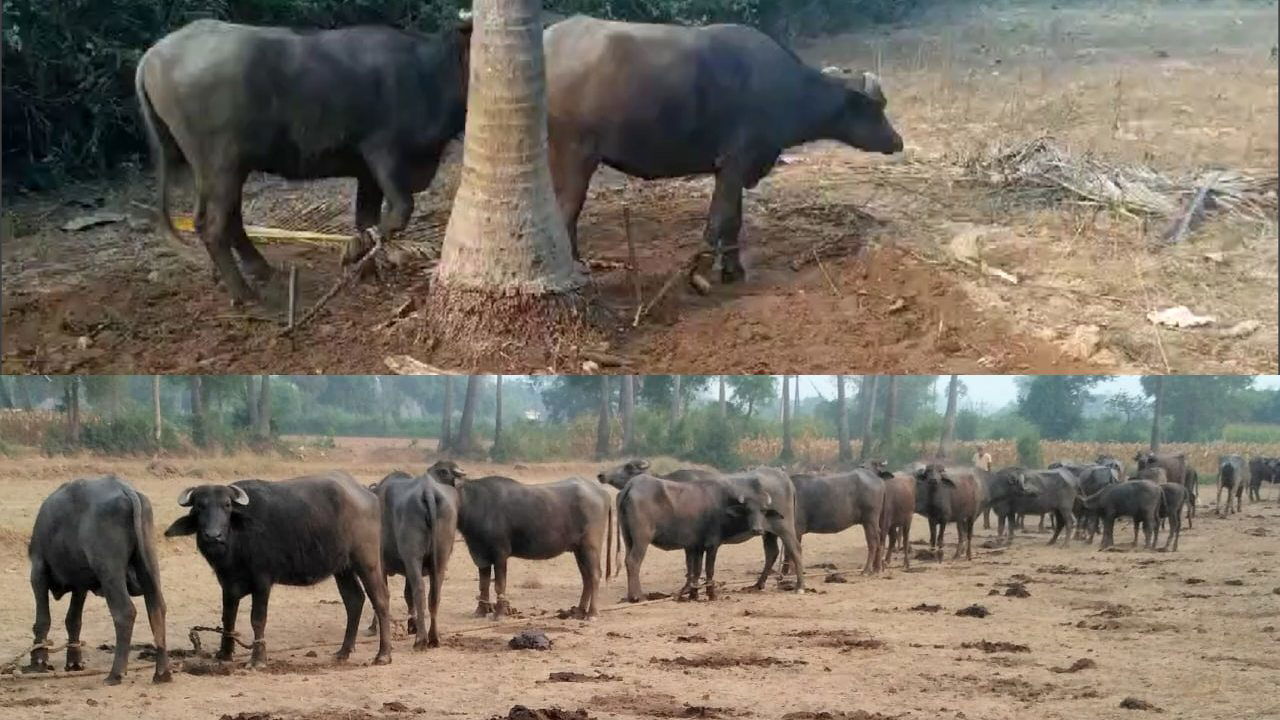
Satish Babu Gadde, hailing from Seethampeta Village in West Godavari District, Andhra Pradesh, is not just any farmer. He carries forward a 124-year-old tradition of farming that began with his grandfather in 1900. Satish, a postgraduate in commerce, is the fourth generation in his family to practice what is known as "regenerative cattle-based agriculture." This method emphasizes the symbiotic relationship between cattle and soil, ensuring sustainable and productive farming.
Heart of the Practice: Cattle and Soil
Satish believes that cattle are essential to agriculture. In his words, "Cattle and soil complement each other. Cattle dung and urine replenish the soil's fertility, while the fodder crops grown in the soil provide food for the cattle." For Satish, this isn't just a belief—it's a proven method that has sustained his family's farming for over a century.
On his 52-acre farm, Satish has ingeniously divided the land into three parts: one dedicated to paddy, another to maize, and the third to coconut trees. He follows a single crop pattern but has managed to double his profit by integrating traditional farming methods with modern insights. Here's how he does it:
-
Paddy and Maize Crops: Satish grows paddy from June to November. After harvesting the paddy, he transitions to maize, utilizing the leftovers as fodder for his cattle until the next planting season. His meticulous methods ensure that from every 75 kg of paddy, he harvests 62 kg of rice—significantly more than the average 45 kg that other farmers typically achieve. This remarkable efficiency is a testament to the effectiveness of his traditional practices.
-
Coconut Farming: Satish has dedicated 16 acres solely to coconut cultivation. His approach is unique—he ties his cattle to the coconut trees, ensuring that their dung and urine naturally fertilize the soil around the roots. This method has led to an impressive yield of 240-270 coconuts per tree annually, far exceeding the 170 nuts reported by the Coconut Board of India. The absence of intercropping further boosts productivity, and traders willingly pay Rs. 2 more per coconut, acknowledging the superior quality of his produce.

Innovative Farming Techniques: Benefits Beyond the Ordinary
Satish’s farming methods are not just about growing crops; they also address some of the most pressing challenges in agriculture today:
-
Disease Prevention: By allowing his cattle to move freely across the fields rather than keeping them in sheds, Satish effectively prevents the spread of diseases like mastitis, which is a major issue in cattle farming across India. "In India, we lose about 27% of cattle every year to diseases," he notes. "But by using this technique, we've managed to reduce that number significantly."
-
Natural Weed Control: The regular movement of cattle ensures that their urine is uniformly distributed across the fields, acting as a natural weedicide. This not only controls weeds but also eliminates the need for harmful chemical herbicides, making his farm more eco-friendly.
-
Water Conservation: Satish’s crop arrangement is designed to require minimal water, which is especially beneficial in regions where water is a scarce resource. The government provides subsidized water, but Satish's methods ensure that his farm uses it efficiently. His cattle, while grazing, also help by naturally aerating the soil, which improves moisture retention through evaporation.
A Commitment to Environmental Cleanliness
Satish’s approach to farming aligns perfectly with the principles of Swachh Bharat, India’s national cleanliness campaign. He believes that cattle play a crucial role in maintaining the cleanliness of the soil, water, and air. "Out of the five elements essential for life, cattle help control three: soil, water, and air," he explains. By keeping these elements clean and healthy, his farming practices contribute to a more sustainable and environmentally friendly ecosystem.
A Cycle of Sustainability and Prosperity
Satish’s commitment to sustainability extends to his cattle farming practices as well. He ensures that calves are raised naturally with their mothers, which helps them develop strong immunity and grow into healthy adults. Each year, his farm welcomes around 11-12 newborn calves. The sale of older cattle, combined with the income from his crops, provides a steady and substantial income, enabling him to maintain and expand his farm operations.
Satish estimates that his income is five times that of a typical farmer in the region. He earns a gross income of Rs. 97,200 per acre from selling rice at Rs. 100 per kg. Additionally, he makes Rs. 340-350 per tree from coconut, resulting in a gross income of approximately Rs. 17,000. Furthermore, he sells cattle for Rs. 80,000 each, contributing to a gross income of almost Rs. 4 lakhs. Altogether, his total annual income exceeds Rs. 60 lakhs.
Looking to the Future: Sharing Knowledge and Expanding Horizons
Satish’s success is an inspiration for others to follow. He plans to expand his practices to other fields, focusing on improving soil fertility and increasing crop yields through the strategic use of cattle. His ultimate goal is to share his knowledge with other farmers, helping to revive and preserve India’s rich agricultural heritage.
In a world where modern farming methods often lead to environmental degradation and unsustainable practices, Mr. Satish Babu Gadde’s story stands out as a beacon of hope. His success with traditional, cattle-based farming offers a sustainable and prosperous future for farmers everywhere. Satish’s story is a powerful reminder of the enduring value of practices passed down through generations—practices that are not only relevant today but essential for a sustainable tomorrow.
















